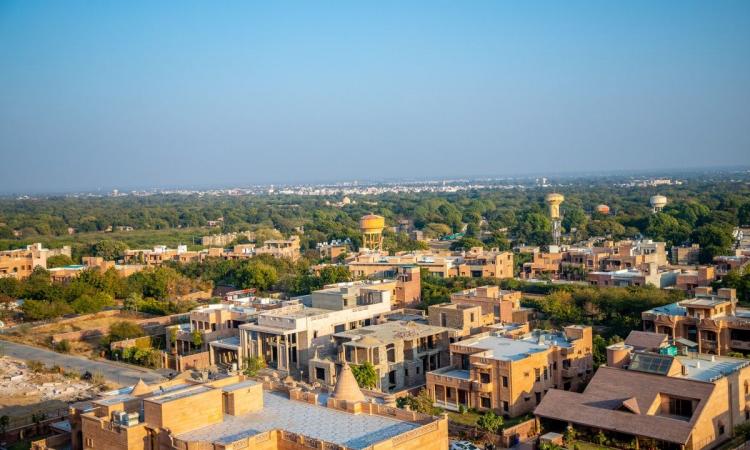
Over the last five decades, rapid increase in urbanisation has led to the deterioration of ecosystem health. Impacts include loss of biodiversity, a threat to the security of resources (especially water) and public health.
In-migration, expansion of built-up areas and urban infrastructure is leading to high consumption of natural resources, in particular water, timber, and energy. The physical extents of urban areas are rapidly expanding demanding augmentation of the transport infrastructure and increasing economic activities. Continued outward growth of cities often consumes prime agricultural land, with long term impacts on habitats, biodiversity and ecosystem services.
Thus, the impacts do not limit only to the administrative boundaries of urban areas, but also impact the peripheral towns and regions due to the intense patterns of consumption of the urban population.
The urban economies across the world are also primary sources of waste generation that include sewage, industrial effluents, air emissions and solid wastes that include construction and demolition waste and hazardous waste streams such as biomedical and electronic wastes. In recent decades, the management of plastic waste has become a daunting challenge. Sound management of such waste streams is therefore needed to protect the urban ecosystems.
Finally, in addition to climate change at regional and global levels, urban activities modify the local and regional climate through the urban heat island effect. These changes together cause significant impacts on net primary production, functions of ecosystems, and biodiversity.
Currently, India’s population living in urban areas from 30% (300 million) of the population living in urban areas would be about 40- 42.5% (595 million) of the population in urban areas in 2025 About two-thirds of the population increase during this period would live in urban centres, considerably increasing the pressure on urban civic amenities.
In the past 20 years, the built area in the top 100 cities alone has increased by almost 2.5 fold or over 5,000 sqkm. Climate change and severe weather conditions are overwhelming most towns and cities not only in India but in many developing countries. The cities have become more vulnerable to floods, extreme climate events, urban heat island effect, water stress, and poor ambient air quality.
Ensuring that infrastructure, both new and existing, is resilient to the impending disasters is an emerging critical need forcing us to relook at our cities to examine how they can be planned better.
The Government of India has launched many initiatives to make cities more resilient to climate change, ensure better liveability and improve administrative efficiency through data-driven governance. However, our urban areas need to formulate their approach based on the four principles of precaution, prevention, mitigation, and restoration, to ensure holistic, inclusive, and sustainable development. It is important to facilitate city administrations to understand the dynamic pressures faced by the urban systems and undertake evidence-based planning to ensure sustainable and holistic development. It is also important to have an assessment framework that is easy to adopt and agile which can serve as a monitoring cum planning tool.
Aga Khan Agency for Habitat has prepared a Toolkit for Urban Ecosystem Management that presents a holistic evaluative framework for ecosystem health assessment and monitoring for urban ecosystems. The framework has been adapted from the Pressure - State - Response framework for conducting ecosystem health assessments of the city to prepare a holistic urban resilience plan which responds to contextual pressures.
To promote practices for resilient urban ecosystem management, the toolkit identifies sustainable nature-based solutions which will support the cities to respond to changes in the ecosystem better.
As a guide for the reader, the framework has been applied in three contexts: a metropolitan ward in Mumbai, Maharashtra (Oshiwara), a peripheral urban city of Vasai Virar, Maharashtra, and an emerging town Malia Hatina, Gujarat.
Each context has its own pace and scale of development which have resulted in contextual challenges. Each context studied also lies in sensitive ecozones like proximal protected forests, creeks, mangroves, or other biodiversity hotspots which further necessitates the need for balanced and responsible development which respects the ecosystem it is sited in.
The toolkit is presented in an easy-to-understand and apply format over 7 chapters.
Chapter 1 explains the trends in urbanization that result in pressure on the health of the urban ecosystems and presents the case for ecosystem-based assessment of urban systems.
Chapter 2: describes the components of an urban ecosystem: abiotic, biotic, and anthropogenic factors and establishes the interrelationship between them.
Chapter 3: presents the indicator-based P (Pressure) -S (State) -R (Response) framework and its adaptation into an ecosystem health assessment framework. It introduces themes, sub-themes, and indicators which define the urban ecosystem and interconnections between them.
Chapter 4: describes a step-wise approach towards building matrices and networks for the identification of impacts and assigning the necessary significance of the impact.
Chapter 5: introduces a toolbox comprising qualitative and quantitative tools to identify hotspots using remote sensed and statistical methods.
Chapter 6: applies the tool to the three contexts and explains the spatial and non-spatial analytics leading to the identification of hotspots.
Chapter 7: finally, a structured decisive and response planning process has been explained in the form of action plans for the three urban systems. Nature-based solutions have been identified as a response to the various pressure hotspots identified.
In order to guide the users: young urban practitioners, administrators, and civil agencies working in climate change adaptation and resilience building, etc, in applying the given framework worksheets have been annexed at the end. Sources of data, benchmarks, and standards, and a compendium of nature-based solutions (NBS) have also been annexed.
The toolkit can be beneficial to government officials, urban practitioners, researchers, community leaders, and agencies to prepare city profiles strategies and action plans and identify sustainable solutions for urban areas, and future proof of our settlements.
The toolkit can be accessed here